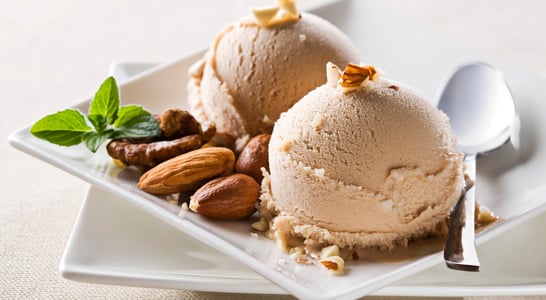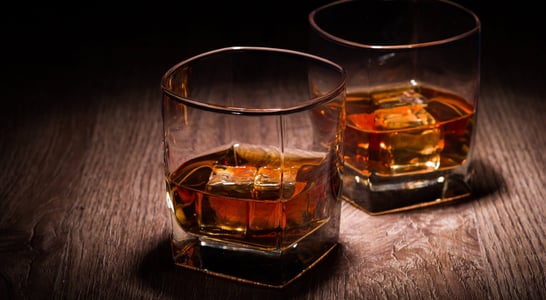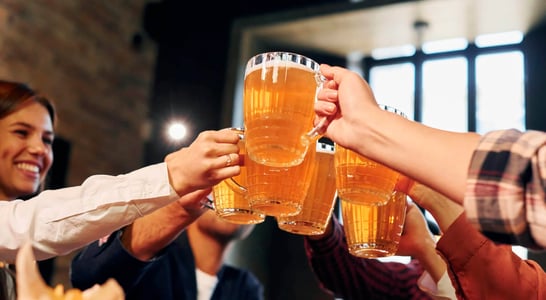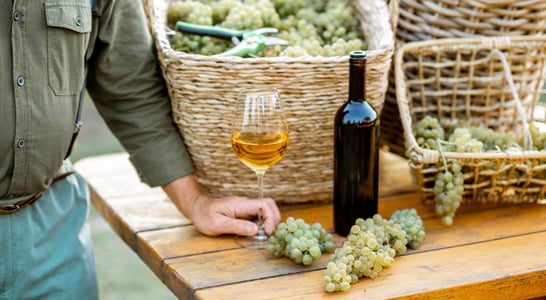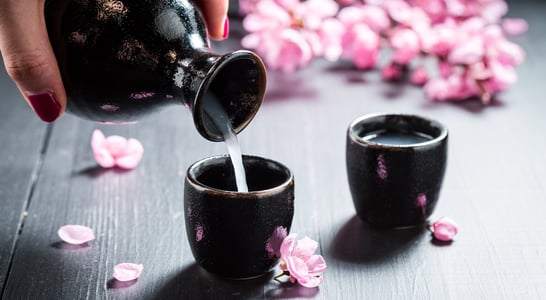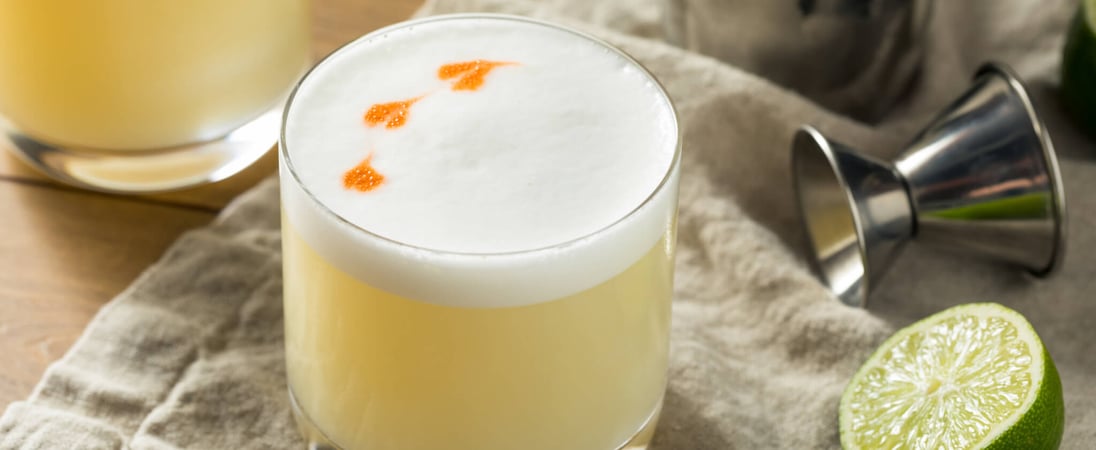
International Pisco Sour Day
South American brandy, zesty lime juice, frothy egg white, and a touch of sweetness — a perfect, refreshing drink for a hot summer day.
Pisco, a brandy that is made from white muscat grapes, hails from Peru and is distinctly different from other styles of brandy, particularly Cognac. Pisco was named for the port city in southern Peru where the beverage was typically exported from.
Infused with other ingredients, including lemon juice, egg white and bitters, Pisco is most well known when made into a distinctly Peruvian drink, which is what International Pisco Sour Day is all about!
How to Celebrate International Pisco Sour Day
Try out some of these fun ideas for enjoying and celebrating International Pisco Sour Day on your own or with friends:
Order a Pisco Sour
In honor of International Pisco Sour Day, head over to a local establishment (a restaurant that specializes in South American cuisine) and sidle up to the bar to order a Pisco Sour. It’s a unique drink that just might surprise the bartender!
Make and Enjoy Pisco Sours at Home
Many people who live in the northern hemisphere might be newly introduced to the idea of the Pisco Sour. It is possible to get pisco from Peru or Chile that is imported to the United States, Europe or other places in the world.
To make the drink in celebration of International Pisco Sour Day, grab some simple syrup, an egg white, freshly squeezed lime juice, pisco and some bitters for a garnish. Shake with ice and then strain, either simply serving in a chilled glass or over fresh ice. When garnishing, use a straw or toothpick to swirl the bitters into an appealing design, just for fun!
History of International Pisco Sour Day
Getting its start in Lima, Peru, the Pisco Sour seems to have originated when American bartender Victor Vaughen Morris created the drink after temporarily moving to Peru to work on building a railway.
Upon the railways’ finish in July of 1904, a celebration was in order and this special drink was mixed with pisco after all of the whiskey had been consumed!
More than a decade later, when Morris immigrated to Lima, Peru with his wife and children, he opened a saloon and recreated the Pisco Sour for his local and expat customers.
By 1988, Peru’s National Institute of Culture declared the Pisco Sour an important part of the country’s national heritage. In 2003, International Pisco Sour Day became official when the Peruvian government established it as an official holiday in the country.
And now, more than a century after its creation, this drink is considered to be a classic among South American cocktails and is famous all throughout the world.
It is important to know that the Chileans, southern neighbors to Peru, also have their own claims on the Pisco Sour, and even have their own day to celebrate it. No matter where it came from, this drink is certainly worth celebrating!
Today, International Pisco Sour Day is here to pay honor and respect to this unique and interesting drink, as well as the Peruvian culture that pisco comes from.
International Pisco Sour Day FAQs
What’s the origin story of the Pisco Sour?
The Pisco Sour originated in Lima, Peru, around the 1920s. Victor Vaughen Morris, an American bartender, created the drink in his bar, “Morris’ Bar.”
Inspired by the Whiskey Sour, he crafted a version using pisco, a Peruvian brandy.
Morris’s bar quickly became popular among locals and foreigners, spreading the drink’s fame.
The recipe evolved over time, with bartenders adding egg whites and bitters to balance flavors, creating the Pisco Sour we know today.
Why do people add egg whites to a Pisco Sour?
Egg whites create the drink’s signature frothy texture. Beyond that, they soften pisco’s strong taste and add a smooth finish.
Peruvians likely adopted egg whites from European cocktail styles of the early 20th century.
The addition became essential over time, turning the Pisco Sour into a balanced cocktail that’s not too strong, nor too sweet.
Are there any myths surrounding the Pisco Sour?
Some myths say that the Pisco Sour was actually invented in Chile. Both Peru and Chile claim pisco as their national drink, leading to heated debates.
However, evidence shows the drink likely originated in Peru. Another myth suggests that the Pisco Sour was first made by mistake, though most experts agree it was an intentional creation by Morris.
How do people celebrate Pisco Sour Day in Peru?
In Peru, bars and restaurants offer Pisco Sours at discounted rates. The holiday also brings pisco festivals where distilleries showcase varieties of the brandy.
Events often include live music, cocktail workshops, and pisco tastings. Some Peruvians also host home gatherings, mixing up large pitchers of Pisco Sours to share with friends and family.
How do Chileans make their version of the Pisco Sour?
In Chile, people use different ingredients to make their version of a Pisco Sour.
They often skip the egg white and use powdered sugar instead of simple syrup.
Chilean Pisco Sours may also include lime juice, but the pisco itself is less intense than Peru’s, resulting in a milder flavor. This distinction is another reason Peru and Chile debate their “original” versions.
Is there a difference between Peruvian and Chilean pisco?
Yes, the difference lies in production methods and ingredients. Peruvian pisco is distilled once and left unaged, preserving its bold flavors.
Chilean pisco undergoes multiple distillations, giving it a smoother, lighter taste.
Chilean pisco is often aged in wooden barrels, while Peruvian pisco is not. These distinctions make Peruvian pisco better suited for strong cocktails like the Pisco Sour.
What’s the story behind the National Pisco Sour Contest?
Every year, Peru hosts a National Pisco Sour Contest. Bartenders across the country compete to create the best Pisco Sour, judged on taste, presentation, and creativity.
The contest celebrates Peru’s cocktail heritage, encouraging bartenders to showcase their skills. Winners gain local fame and sometimes international recognition, boosting interest in Peruvian cocktails.
Are there any regional variations of the Pisco Sour within Peru?
Yes, different regions add local ingredients to make unique variations. In Cusco, for example, some bartenders add coca leaves to the cocktail, giving it a local twist.
Other regions may add fruits like maracuya (passion fruit) or mango, creating fruity versions that highlight local flavors while keeping the traditional pisco base.
Why is there a rivalry between Peru and Chile over pisco?
The rivalry stems from both countries claiming pisco as their national spirit.
Each country has different laws governing pisco production, and they often dispute over the “authentic” origins. Both Peru and Chile have cities named “Pisco,” adding fuel to the fire.
This rivalry plays out every year on International Pisco Sour Day, with both nations celebrating their own versions.
Are there non-alcoholic versions of the Pisco Sour?
Yes, some mocktail versions replace pisco with fruit juice or a blend of lime and grape juice to mimic pisco’s flavor.
These versions still use egg whites and bitters for a familiar texture and taste. Peruvian restaurants sometimes offer this “virgin” Pisco Sour to include younger patrons or those who prefer non-alcoholic drinks.
Also on ...
View all holidaysIce Cream For Breakfast Day
Start your day off on the sweet side by skipping the eggs and bacon — savor the deliciousness of your favorite ice cream flavors instead.
Rose Day
A garden's most captivating blossoms, roses come in an array of hues and unleash an enchanting fragrance that fills the air.
We think you may also like...
International Whisk(e)y Day
Take a sip of the liquid gold that hails from the barrels of fermented grains. It's a complex, warm, and welcoming elixir.
